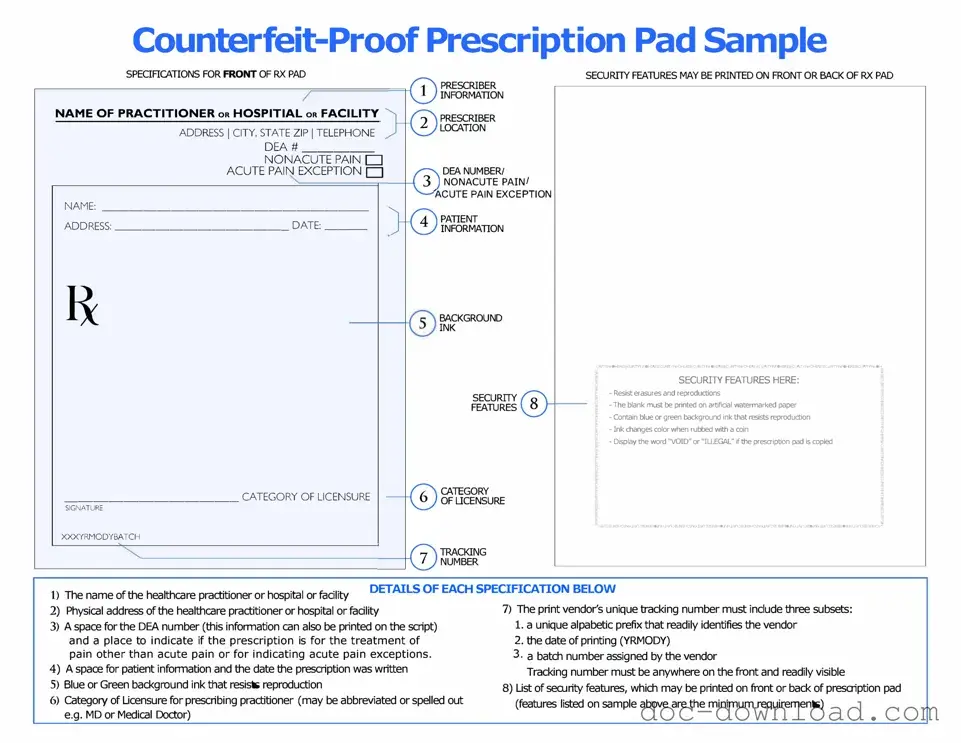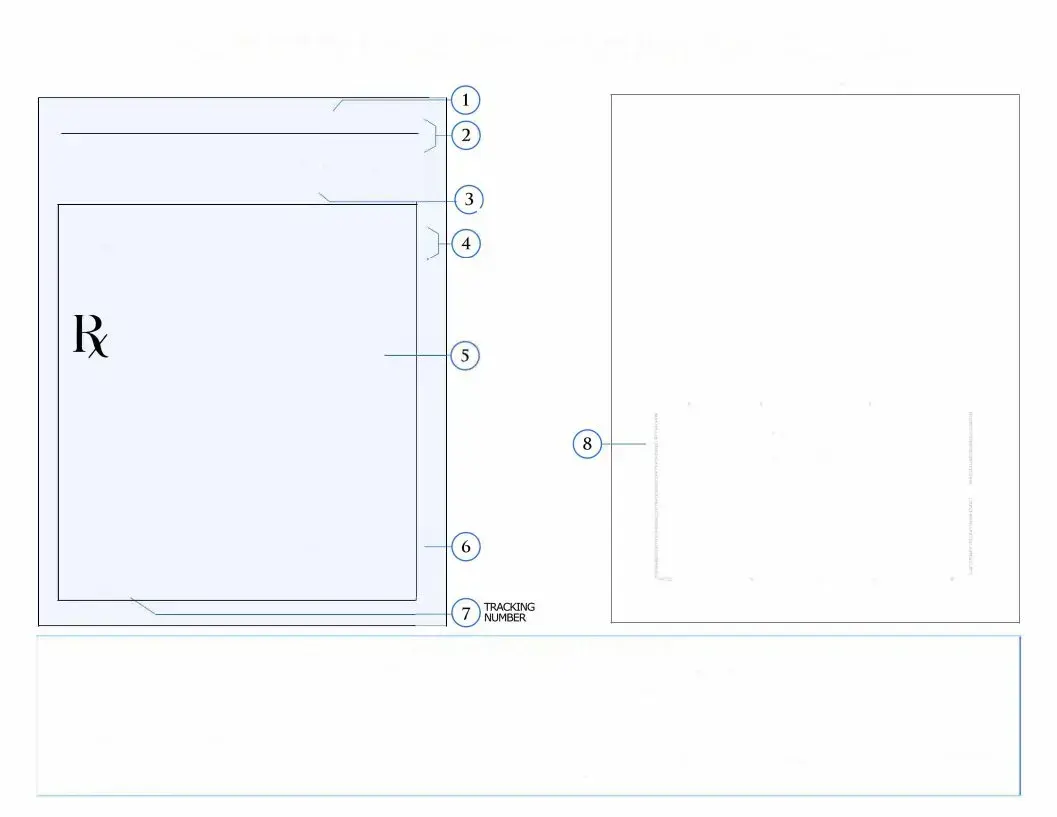The Prescription Pad form is similar to a Medical Record Release form. Both documents serve to ensure that patients have control over their medical information. The Medical Record Release form allows patients to authorize healthcare providers to share their medical history with other professionals. Just like the Prescription Pad, it requires specific details about the patient and the information being shared, ensuring that confidentiality is maintained while allowing for necessary communication between providers.
Another document that resembles the Prescription Pad is the Medication Administration Record (MAR). The MAR is used in healthcare settings to track the administration of medications to patients. Similar to the Prescription Pad, it includes details about the medication, dosage, and timing. Both documents aim to prevent errors and ensure that patients receive the correct treatment as prescribed by their healthcare provider.
The Patient Consent form shares similarities with the Prescription Pad as well. Both documents require the patient’s signature, indicating their agreement to a specific treatment or procedure. The Patient Consent form outlines the risks and benefits of a treatment, while the Prescription Pad focuses on the specific medications prescribed. Both emphasize the importance of informed consent in healthcare.
A Treatment Plan is another document that aligns closely with the Prescription Pad. It outlines the patient's diagnosis, treatment goals, and the prescribed medications. Like the Prescription Pad, the Treatment Plan provides a clear roadmap for patient care. Both documents are essential for ensuring that everyone involved in a patient’s care understands the prescribed course of action.
The Referral Form is yet another document that shares characteristics with the Prescription Pad. When a healthcare provider refers a patient to a specialist, they often use a Referral Form to communicate necessary information. This document, like the Prescription Pad, includes patient details and the reason for the referral, ensuring continuity of care and effective communication between providers.
Similar to the Prescription Pad, the Insurance Authorization form is crucial for ensuring that patients receive coverage for prescribed treatments. This document requires details about the patient and the services being authorized. Both the Insurance Authorization and the Prescription Pad aim to facilitate access to necessary medications and treatments while navigating the complexities of healthcare systems.
The Lab Order form also bears resemblance to the Prescription Pad. It is used by healthcare providers to request specific laboratory tests for patients. Both documents require precise information about the patient and the tests or medications needed. They serve to streamline the process of obtaining essential health information, ensuring that patients receive appropriate care based on accurate data.
The Treatment Authorization Request (TAR) is another document that operates similarly to the Prescription Pad. It is typically used to obtain approval for specific treatments or medications from insurance companies. Both documents require detailed information about the patient and the prescribed treatment, ensuring that patients receive the necessary care while adhering to insurance protocols.
In navigating patient care documentation, it is essential to recognize the variety of forms available, such as the Prescription Pad, which is designed to streamline the prescribing process and enhance patient safety. Particularly, for those looking to manage their healthcare decisions legally, a Power of Attorney (POA) form in Colorado plays a pivotal role. This document allows individuals to appoint others to make decisions on their behalf, ensuring their wishes are respected when they cannot advocate for themselves. For more information about POA forms and accessing necessary templates, refer to Colorado PDF Forms, which provide helpful resources for individuals seeking to establish this important legal document.
Finally, the Follow-Up Care Plan can be compared to the Prescription Pad. This document outlines the next steps in a patient's treatment after an initial visit or procedure. Like the Prescription Pad, it includes specific instructions regarding medications and follow-up appointments, ensuring that patients understand their ongoing care needs and promoting better health outcomes.

